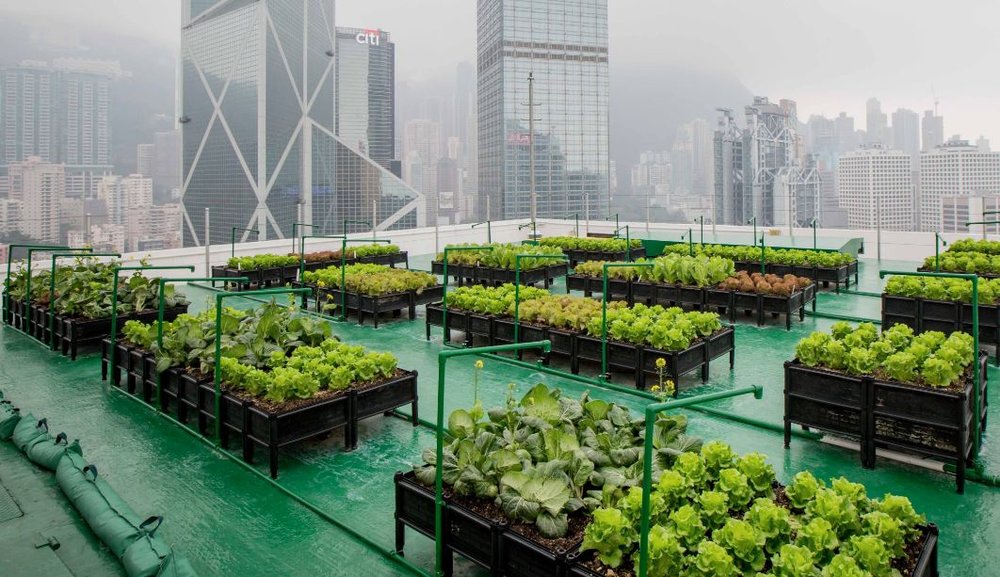The Buzz on City Blooming
The Buzz on City Blooming
Blog Article
The Best Guide To City Blooming
Table of ContentsCity Blooming for BeginnersCity Blooming Fundamentals Explained5 Easy Facts About City Blooming DescribedOur City Blooming IdeasIndicators on City Blooming You Need To Know
Fascinated in growing food up for sale in the City of Chicago? Thinking of starting an area yard? Modifications to the Chicago Zoning Statute enable agricultural uses like area yards and metropolitan farms in many components of the city. Below is a checklist of regularly asked questions pertaining to the policies and regulations that farmers need to think about when planning a city farming project.
The zoning change does not change any other codes handling composting, structure authorizations, acquiring or leasing City had building, service licenses or ecological contamination. There are existing codes that manage these concerns and they continue to be completely effect and might be relevant to your job. Neighborhood gardens are normally owned or managed by public entities, civic organizations or community-based organizations and kept by volunteers.
Urban ranches grow food that is planned to be marketed, either on a nonprofit or for-profit basis. Due to their business purpose, urban ranches call for an organization permit. Yes. An area garden is enabled to offer excess produce that was grown on site if the sales are accessory or subservient to the garden's main objective defined over.
All about City Blooming
The quantity of compost product can not go beyond 25 cubic lawns at any type of given time according to the standards in 7-28-715 of the City's Municipal Code. Due to the fact that the soil at many brand-new garden sites requires changing, compost, soil, timber chips, or other materials can be gotten to create or enhance the growing room.

If a building permit is required after that the hoophouse will be taken into consideration an accessory structure. You can find out even more about the building permit requirements by speaking to the Division of Buildings. The 25,000-square-foot size limitation is meant to avoid a single neighborhood garden from dominating an offered block or detracting from the block's existing residential or commercial character.
The limit does not use to yards found in Public Open Space (POS) districts. Can there be even more than one neighborhood yard that is 25,000 square feet on a single block? Yes. The dimension limitation applies to private yards, not to individual blocks. No. Fencing is not needed, nonetheless, yards that have huge auto parking areas might be needed to mount fence or other landscaping functions.
The Main Principles Of City Blooming
B1 & B2 districts require that all business usage tasks be carried out inside your home. Is fence needed for city ranches? Fences might be needed, along with landscape design and testing, for specific vehicle parking locations and outside work or storage space areas depending on area and the details task taking place.
Yes. Urban ranches require building permits and zoning approvals before building and construction. Other kinds of city testimonial might be called for depending on specific frameworks, tasks, dimension, landscape design, licensing, public health and stormwater administration issues. A lot of these requirements are recognized in the task layout or permitting process, nevertheless, the candidate may be responsible to individually recognize particular licenses or permits that may be required.
Yes. The kind of permit is determined by what is occurring at the website. The Department of Organization Matters and Customer Protection can assist determine the particular type of company permit that's called for. Yes. Off street vehicle parking is needed for most commercial jobs in Chicago. click here to find out more The called for number of garage is based upon the variety of staff members dealing with site and not the square footage of the growing area.
The 7-Minute Rule for City Blooming

Yes. An urban ranch can sell compost material generated on site, nevertheless, the operation has to adhere to the guidelines in 7-28-715 of the Chicago Municipal Code. Yes. Aquaponic systems are allowed inside your home on urban farms in several zoning districts. A zoning review and building permit is called for in order to set up structures or systems and an organization certificate is needed as explained over.
As much as five hives or colonies of honey bees might be maintained as an accessory use. Beekeepers should sign up with the Illinois Department of Agriculture. For more details about the recommended zoning change you might get in touch with the Department of Housing and Economic Growth, Bureau of Preparation and Zoning at 312.744.8563.
, which takes location in country areas at the side of suburban areas.
City Blooming - An Overview
It can include a motion of natural farmers, "foodies" and "locavores", that seek to develop social media networks started on a shared ethos of nature and community holism. These networks can develop using official institutional support, becoming integrated into regional community preparation as a "change community" motion for lasting urban advancement.
The more direct accessibility to fresh vegetable, fruit, and meat items that may be know with metropolitan agriculture can enhance food safety and security and food safety while lowering food miles, leading to lower greenhouse gas emissions, consequently adding to environment change mitigation. Some of the first proof of urban agriculture comes from Mesopotamia.
Report this page